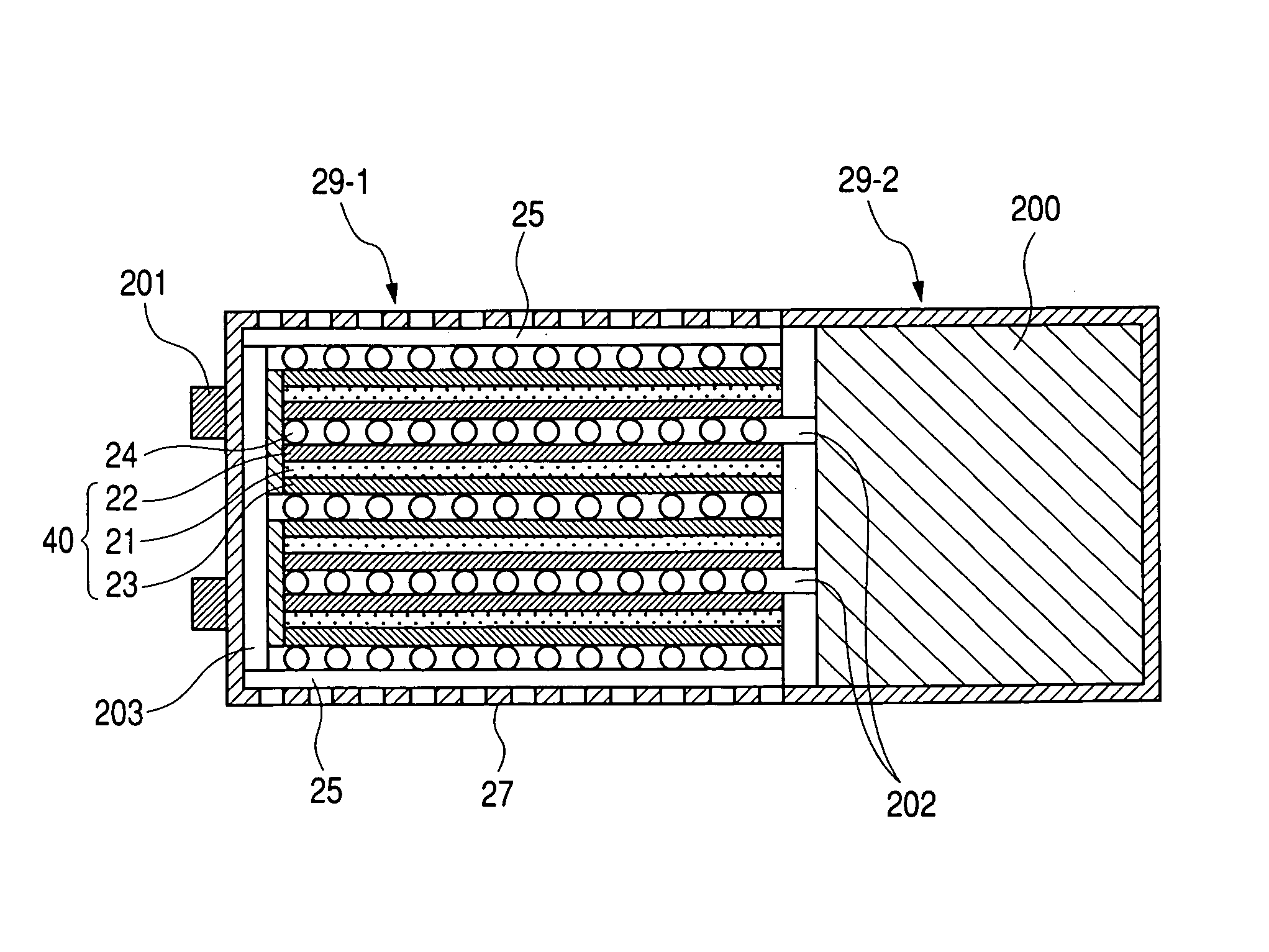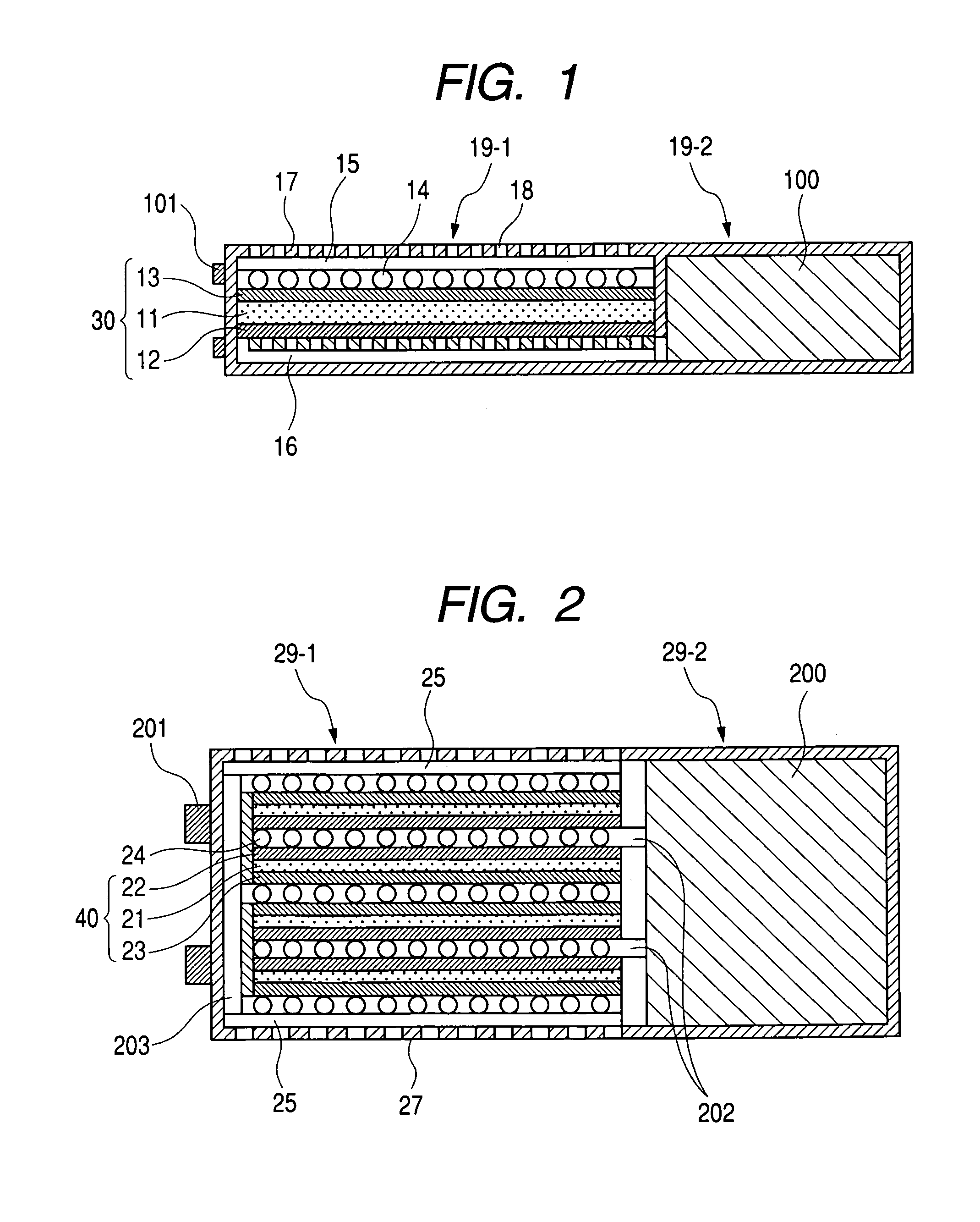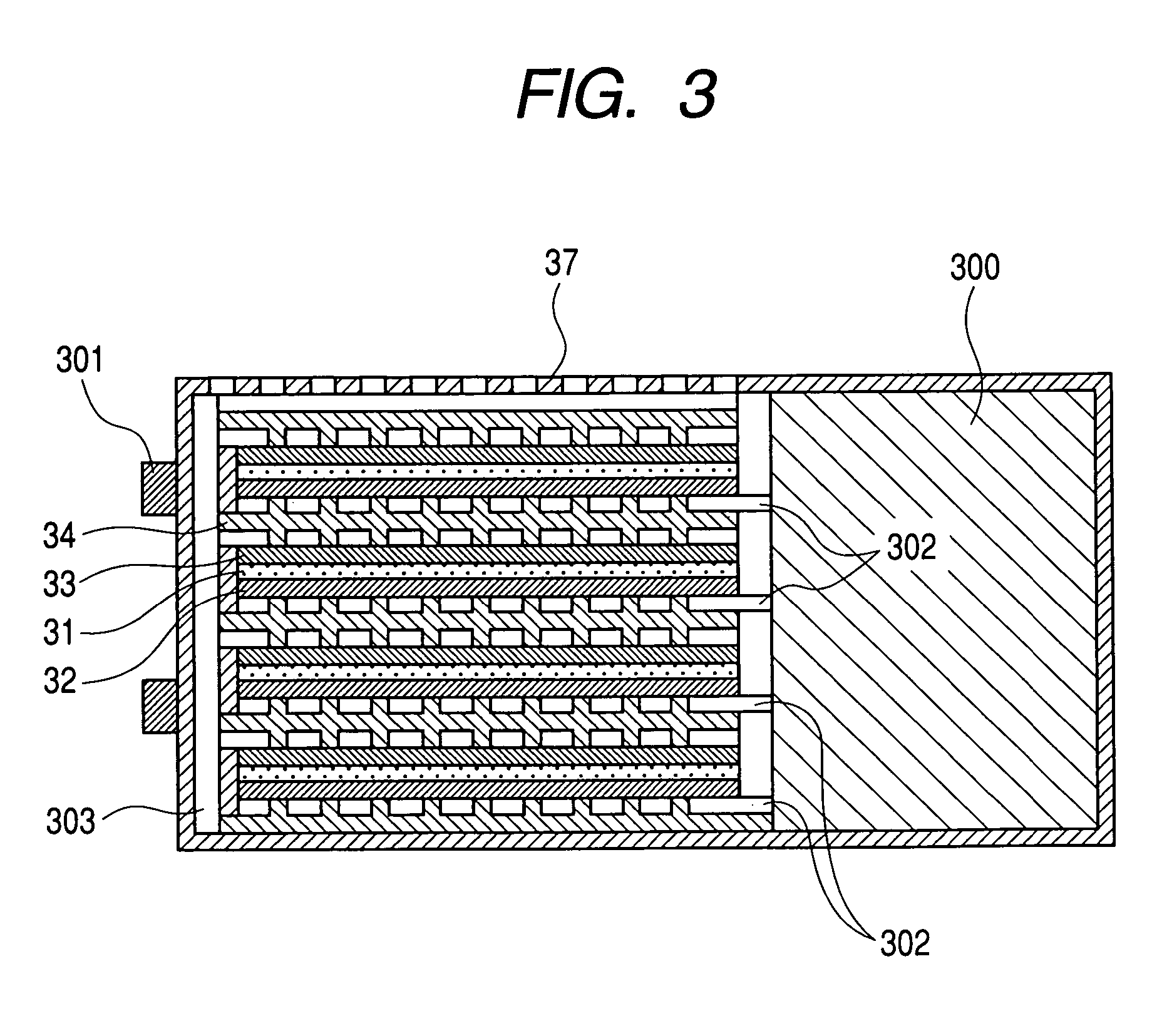Fuel cell and small electric equipment
a fuel cell and electric equipment technology, applied in the field of fuel cells, can solve the problems of large fuel cell area, inability to improve the power generation efficiency of the fuel cell, and difficulty in accurately forming a fine structure for oxidizer and fuel passages, etc., to achieve easy manufacturing, increase the area for the reaction of fuel cells, and excellent buckling strength
- Summary
- Abstract
- Description
- Claims
- Application Information
AI Technical Summary
Benefits of technology
Problems solved by technology
Method used
Image
Examples
example 1
[0044]FIG. 1 shows a sectional view of a fuel cell as a first example of the present invention. The fuel cell includes at least a cell unit (fuel cell body) 19-1 having an electrolyte / electrode joined member 30, a fuel unit 19-2 for storing a fuel 100, and power taking out terminals 101.
[0045]In FIG. 1, the electrolyte / electrode joined member 30 includes an oxidizer electrode 13 having a catalyst on the upper surface of an electrolyte membrane 11 and a fuel electrode 12 having a catalyst on the lower surface thereof. The electrolyte membrane 11 is composed of, for example, a polymeric material having a protonic conductivity, specifically Nafion (trade name; produced by DuPont).
[0046]The oxidizer electrode 13 and the fuel electrode 12 are composed of, for example, carbon powder containing platinum microparticles.
[0047]The electrolyte / electrode joined member 30 has spherical bead spacers 14 on the upper surface of the oxidizer electrode 13 and a separator 16 with a fuel flow path on t...
example 2
[0051]FIG. 2 shows a sectional view of a fuel cell as a second example of the present invention. The fuel cell includes at least a cell unit 29-1 having electrolyte / electrode joined members 40, a fuel unit 29-2 for storing a fuel 200, and power take-out terminals 201. The stack fuel cell of this example is characterized in that electrodes are disposed such that the same kind of electrodes (that is, fuel electrodes or oxidizer electrodes) face each other, which eliminates the necessity of a separator for separating fuel from an oxidizer. That is, oxidizing gas flow paths for flowing an oxidizing gas containing oxygen flow are formed between the electrolyte / electrode joined members where positive electrodes face each other, and fuel gas flow paths for flowing a fuel gas containing hydrogen are formed between the electrolyte / electrode joined members where negative electrodes face each other. The spherical spacers as a principal feature of the present invention support each of the elect...
example 3
[0062]FIG. 4 shows a schematic view of a digital camera using the fuel cell of the present invention.
[0063]As described above with reference to FIG. 1, a fuel cell 401 includes a cell unit having an electrolyte / electrode joined member and a fuel unit for storing a fuel, and holes formed in the surface of the fuel cell in FIG. 4 are used to take in air therethrough.
[0064]The fuel cell of the present invention is advantageous in that the output density is high; the operating temperature is as low as 100° C. or less, whereby long-term durability is expectable; it is suitable for miniaturization; and the handling is easy, and can therefore be utilized for portable equipments such as mobile phones, cameras, video cameras, notebook personal computers, and the like or as a mobile power supply. Accordingly, small electric equipments using the fuel cell of the present invention can be reduced in size / weight and can be used for a long period of time.
[0065]That is, the fuel cell of the present...
PUM
| Property | Measurement | Unit |
|---|---|---|
| electromotive force | aaaaa | aaaaa |
| particle diameter | aaaaa | aaaaa |
| operating temperature | aaaaa | aaaaa |
Abstract
Description
Claims
Application Information
 Login to View More
Login to View More - R&D
- Intellectual Property
- Life Sciences
- Materials
- Tech Scout
- Unparalleled Data Quality
- Higher Quality Content
- 60% Fewer Hallucinations
Browse by: Latest US Patents, China's latest patents, Technical Efficacy Thesaurus, Application Domain, Technology Topic, Popular Technical Reports.
© 2025 PatSnap. All rights reserved.Legal|Privacy policy|Modern Slavery Act Transparency Statement|Sitemap|About US| Contact US: help@patsnap.com



